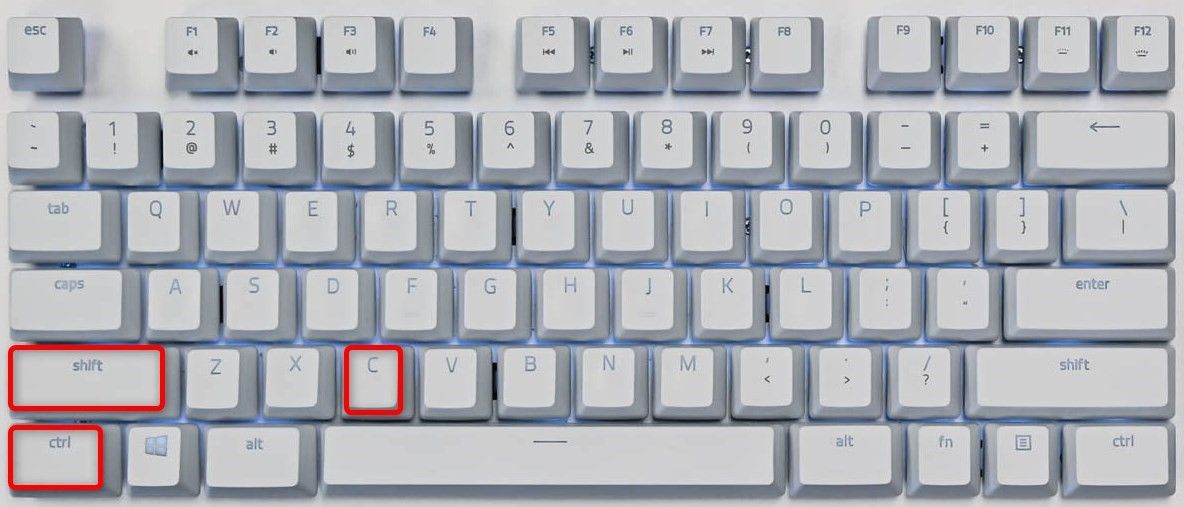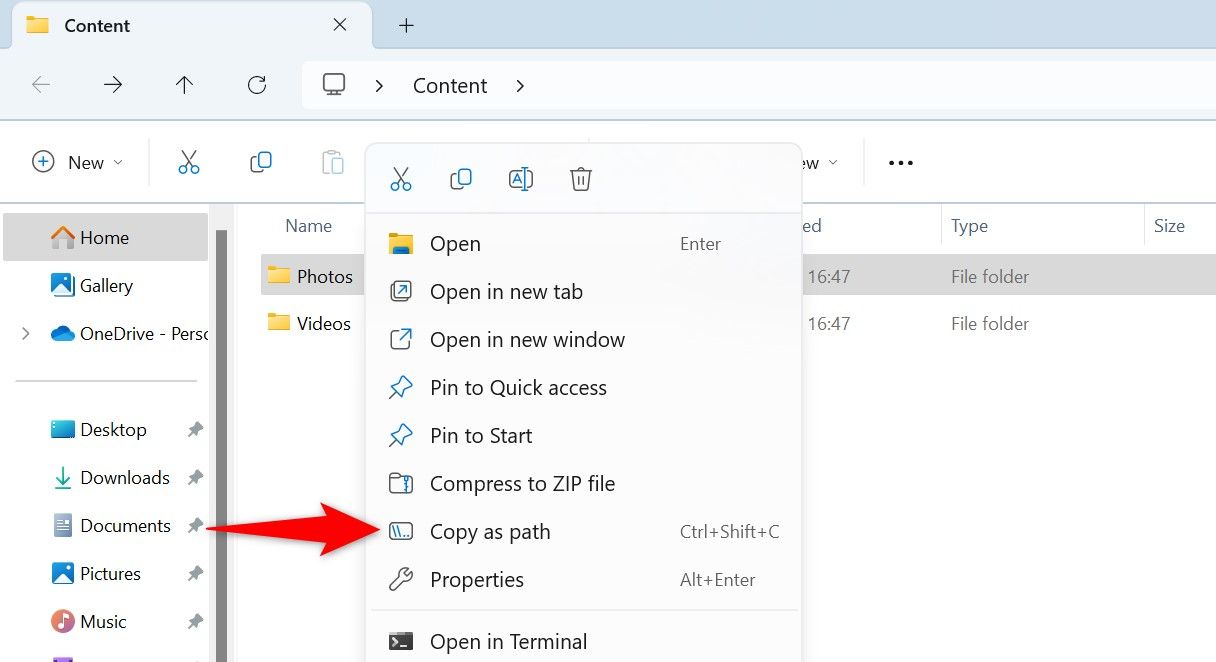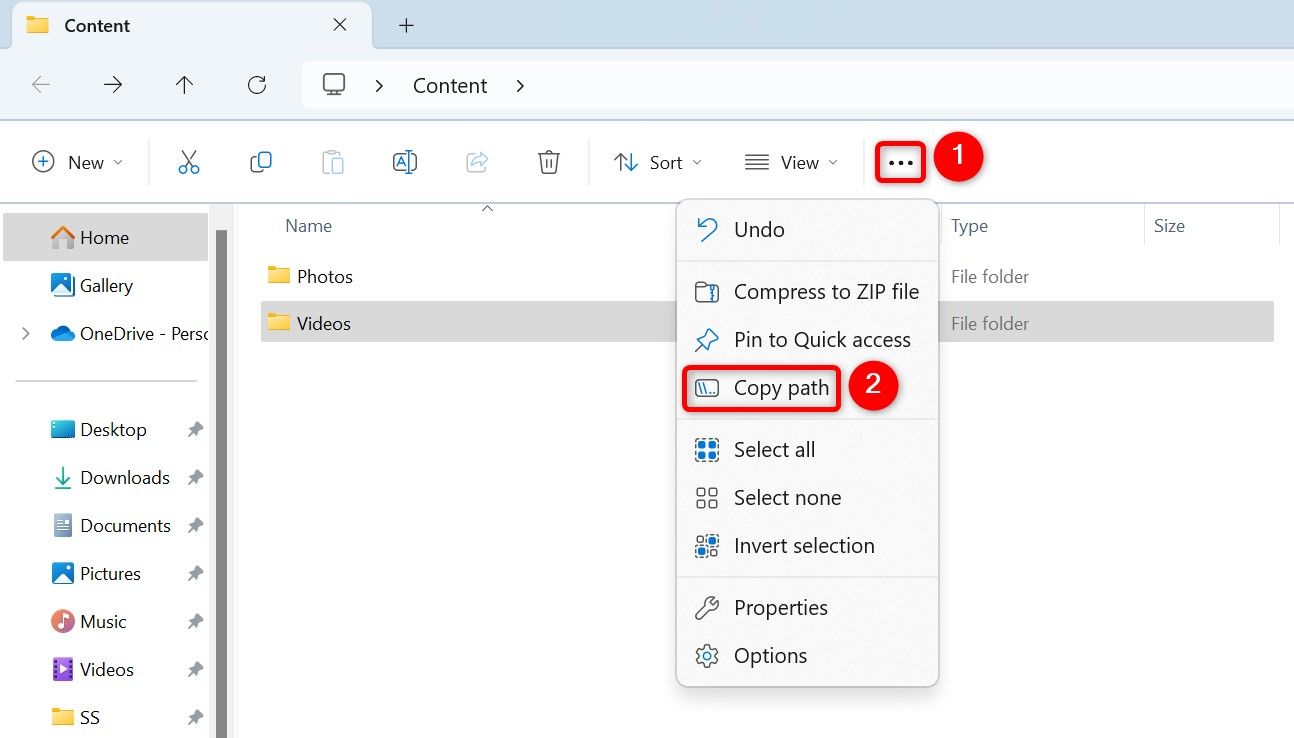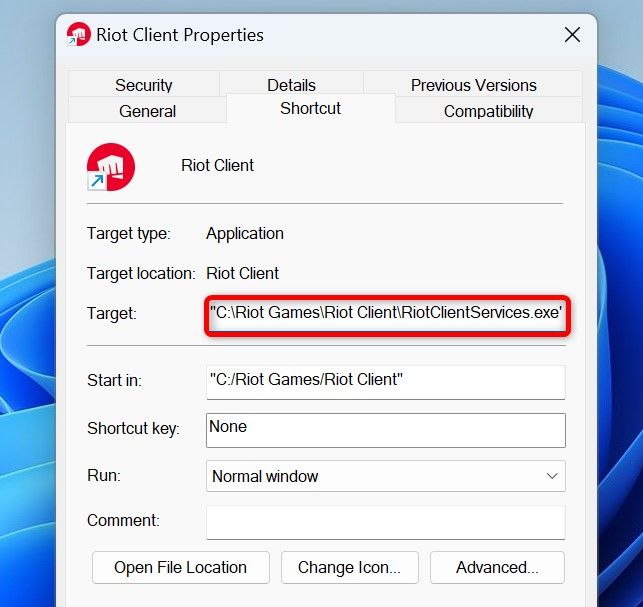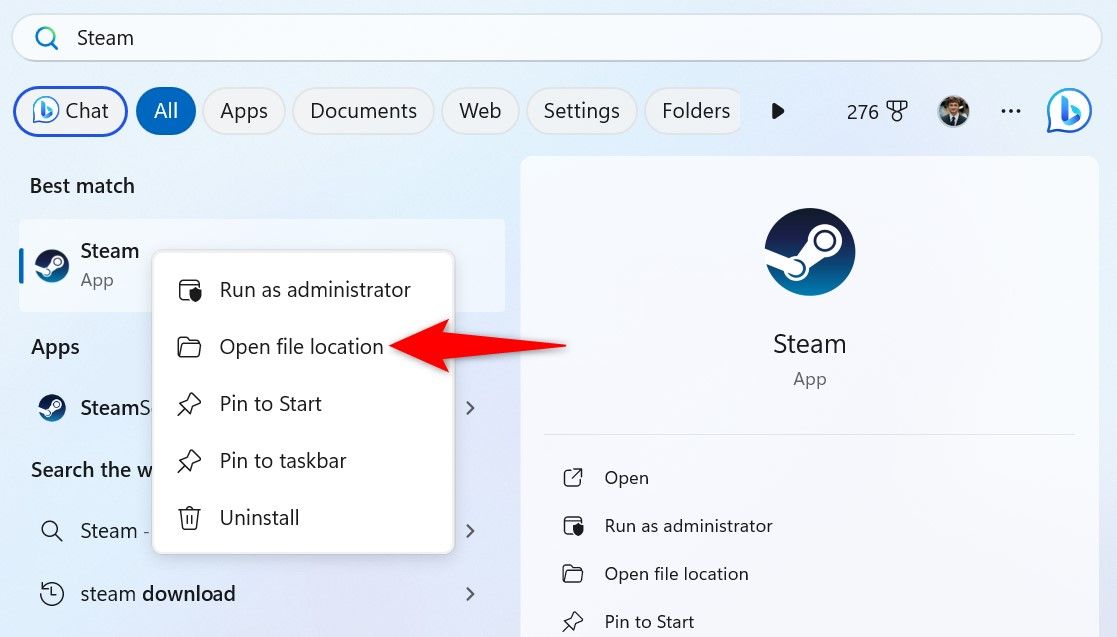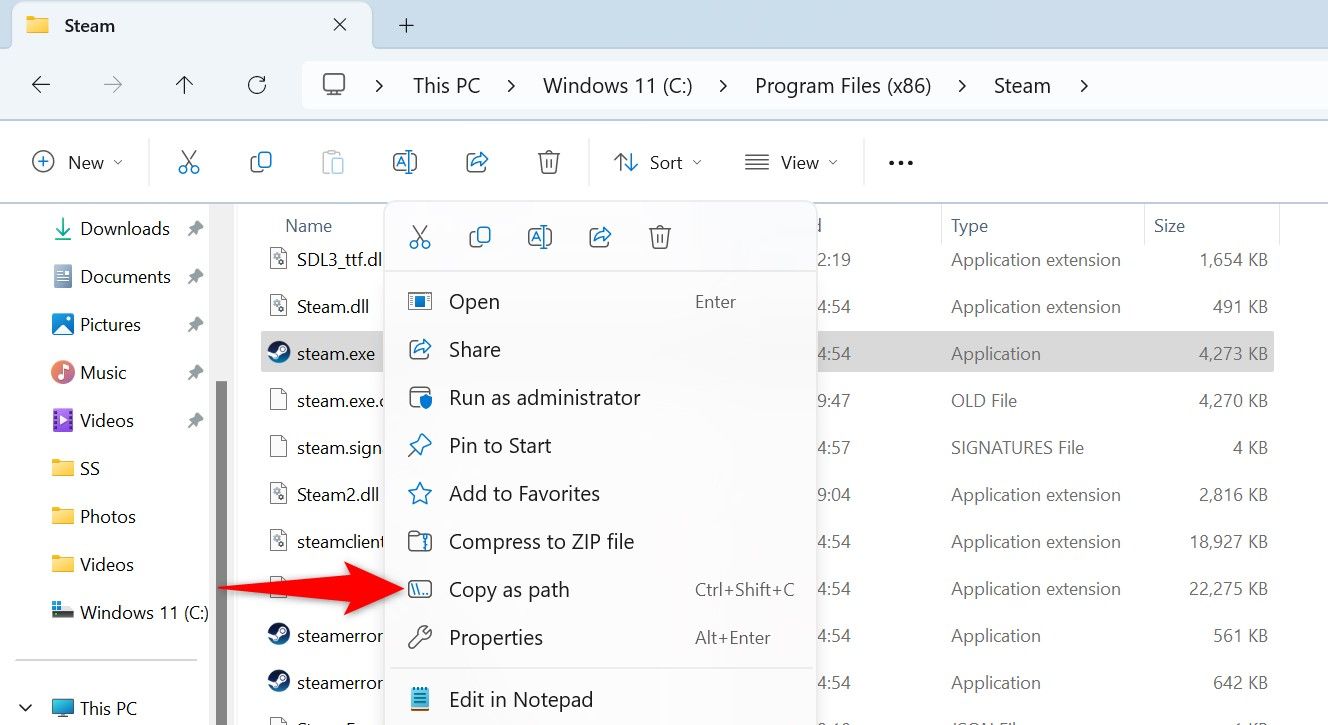Key Takeaways
-
To copy a file or folder’s path, open File Explorer, find the file or folder, right-click it, and select “Copy as Path.”
- To copy the path using a keyboard shortcut, select the file or folder in File Explorer and press Ctrl+Shift+C.
- To copy an app’s path whose shortcut is on the desktop, right-click the shortcut, select “Properties,” access the “Shortcut” tab, and you’ll see the path in the Target field.
Copying a file or folder’s path on Windows 11 is as easy as selecting an option in the right-click menu or pressing a keyboard shortcut. We’ll show you how to do it in various ways on your PC.
The easiest way to copy a file or folder’s path is by choosing an option in that item’s right-click menu. You can use this method to copy paths for multiple items as well.
To start, open File Explorer using Windows+E and locate your file or folder. Right-click that item, and in the open menu, select “Copy as Path.”
To copy paths of multiple files or folders, select all those items, right-click a selected item, and choose “Copy as Path.”
Windows has copied the full absolute path to your selected item(s).
Using a Keyboard Shortcut
Windows 11’s 22H2 update introduced the ability to copy file and folder paths using a keyboard shortcut.
To use it, launch File Explorer and locate your file or folder. Select the file or folder, then press Ctrl+Shift+C on your keyboard.
To copy the path of multiple files and folders at once, highlight all of the folders and files and then press the Ctrl+Shift+C keyboard shortcut.
Windows has copied the selected file or folder’s path to your clipboard.
Windows 11’s File Explorer utility has a button on its toolbar to let you copy your file or folder’s path. To use it, open File Explorer, and locate your file or folder and highlight the folder or file.
From File Explorer’s top toolbar, select the three dots and choose “Copy as Path.”
To copy multiple files or folders’ paths, highlight all those items before clicking “Copy Path.”
And that’s it.
How to Copy the Path of an App
If you have an app’s shortcut, and you want to copy that app’s full path, right-click the shortcut and select “Properties.” In the Shortcut tab, you’ll see the full app path in the “Target” field. You can copy this field directly by selecting it and pressing Ctrl+C.
If you launch your app via Windows Search and not from a desktop shortcut, it’s still possible to find your app’s full path. To do that, open the Start Menu and search for your app. Right-click the app and select “Open File Location.”
On the open window, right-click the app again and select “Open File Location.”
Your app is now highlighted. Right-click the app and select “Copy as Path.”
Tips for Pasting the File, Folder, or App Path You’ve Copied
Pasting the copied file, folder, or app path is as easy as accessing a text field and pressing Ctrl+V. Alternatively, right-click the text field and choose “Paste.”
Note that your copied path is already enclosed with double quotes. If you plan to use the path in a command and the command requires using double quotes, you don’t have to manually type the double quotes.
Also, the path you’ve copied doesn’t contain any formatting. If you paste it in a document, such as a Microsoft Word document, it’ll adapt to the document’s original formatting.
And that’s how you find an item’s full path as well as paste it at the desired location on your Windows 11 machine. We hope you find the methods useful.
source
